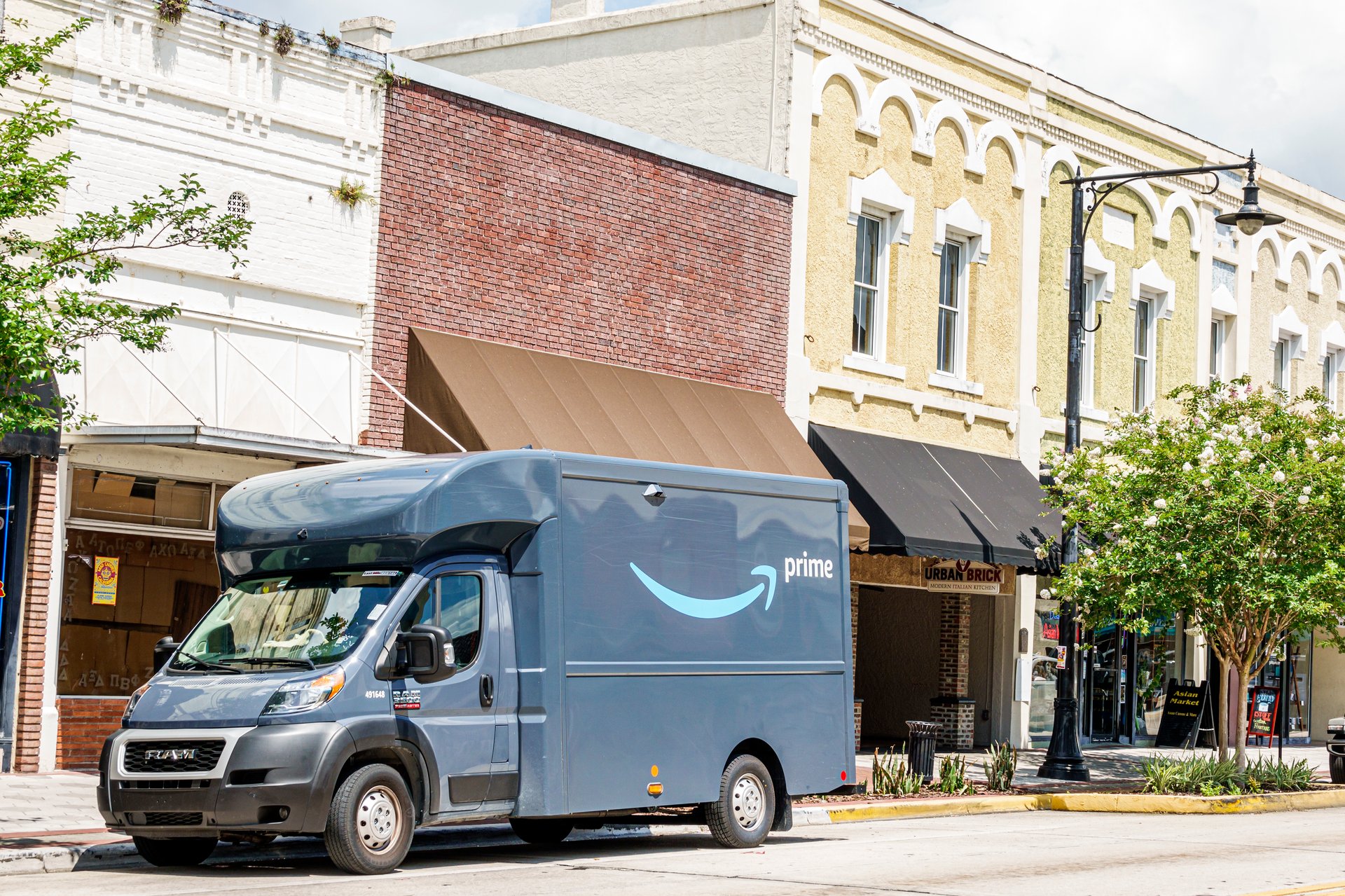Amazon is speeding up delivery for thousands of small towns
With a $4 billion investment, the company is pushing faster fulfillment into small-town America — reshaping competition for the final mile

Jeffrey Greenberg/Universal Images Group via Getty Images
Amazon is speeding up delivery in the last places it hasn’t already. The company announced Tuesday that it’s rolling out same-day and next-day Prime shipping to more than 4,000 small towns and rural communities across the U.S. — part of a broader effort to close delivery gaps in areas that have lagged behind major metros.
Suggested Reading
The expansion is backed by more than $4 billion in planned infrastructure investments through 2026. That includes building or retrofitting dozens of rural delivery stations and bringing fast fulfillment to an additional 13,000 ZIP codes — covering more than half of the U.S. population and adding capacity for up to a billion additional packages a year. That means packages are coming to towns like Havre, Montana, and Sweetwater, Texas, as quickly as they already do to Seattle or Brooklyn.
Related Content
Amazon says the rollout will support about 100,000 jobs tied to its delivery network, including drivers, warehouse staff, and contractors.
For years, Amazon’s logistics strategy has focused on population centers, where density makes same-day delivery more cost-effective. But this move shifts the company’s attention to markets where competition is lighter and shipping times remain inconsistent. FedEx and UPS have both scaled back rural service in recent quarters, citing rising costs. Walmart is still expanding its fulfillment capabilities but hasn’t matched Amazon’s footprint.
“Everybody loves fast delivery,” Doug Herrington, CEO of Worldwide Amazon Stores, said in the company’s announcement. “So, whether you live in Monmouth, Iowa or in downtown Los Angeles, now you’re going to have the same fantastic Amazon customer experience: the ability to get the wide variety of items you need to keep your household running every day.”
But the expansion also serves a clear commercial purpose: Internal data shows that faster delivery directly correlates with higher purchase frequency among Prime members — and the company says that early results in its rural pilot areas seem to back that thesis.
According to Amazon, in more than 1,000 small towns and rural communities where same-day and next-day Prime delivery is already live, customers are shopping more frequently and buying more household essentials. According to the company, over 90% of the top 50 items being reordered fall into Amazon’s “everyday essentials” category, a sign that speed isn’t just driving impulse buys but changing how rural shoppers restock core goods — which Amazon sees as a long-term behavioral change rather than a short-term bump.
That behavior shift helps explain why Amazon is doubling down. Faster delivery isn’t just a perk — it’s a way to move deeper into consumers’ routines. By matching or beating the convenience of a quick trip to the store, even in low-density markets, Amazon is betting that same-day logistics can unlock a new tier of Prime loyalty in places it hasn’t fully penetrated before.
To make the economics work, Amazon is relying on predictive inventory systems to stock the right products at the right time. Local stations will be preloaded with region-specific items — pet supplies in Cedarbug, Wisconsin, school gear in Dahlonega, Georgia — based on demand signals. It’s a model designed to shorten delivery windows without overextending fulfillment infrastructure.
Internationally, the company is following a similar playbook. Amazon plans to invest more than £43 billion (roughly $54 billion) in the U.K. over the next three years, with a major focus on logistics, data centers, and AI infrastructure. That includes four fulfillment centers, over 100 upgrades to existing facilities, and a major studio redevelopment for Amazon MGM. The new commitment brings Amazon’s total U.K. investment since 2010 to over £56 billion — about $71 billion.
The timing comes as Amazon tries to squeeze more growth from its core retail business while fending off rivals and cutting costs elsewhere. Prime membership has plateaued in many urban markets, and CEO Andy Jassy told shareholders in April that delivery speed remains one of the most important levers for boosting conversion and engagement. Faster service, he said, makes customers shop more often — and builds stickier relationships with Prime.
Still, the rural push may carry consequences for the very communities it aims to serve. Small retailers, long reliant on proximity and personalized service to stay competitive, may find themselves squeezed by rising customer expectations they can’t match. In areas where Amazon was once a secondary option, it could quickly become the default.
And soon, the country road could become Amazon’s newest fast lane.